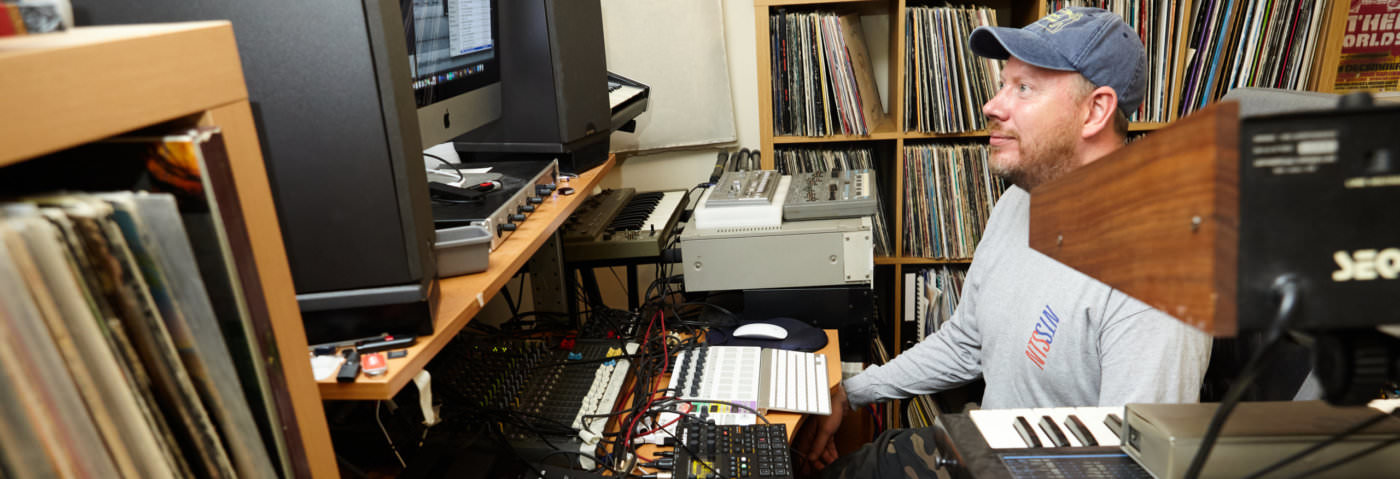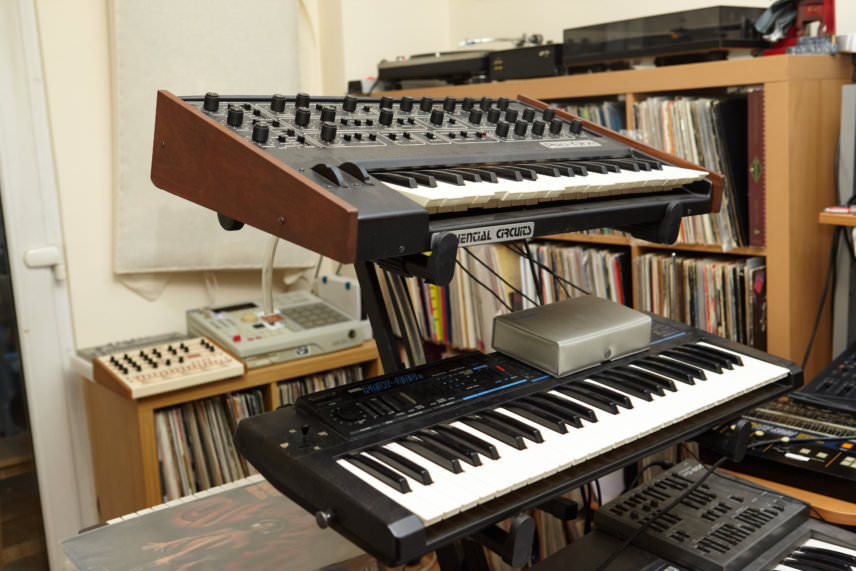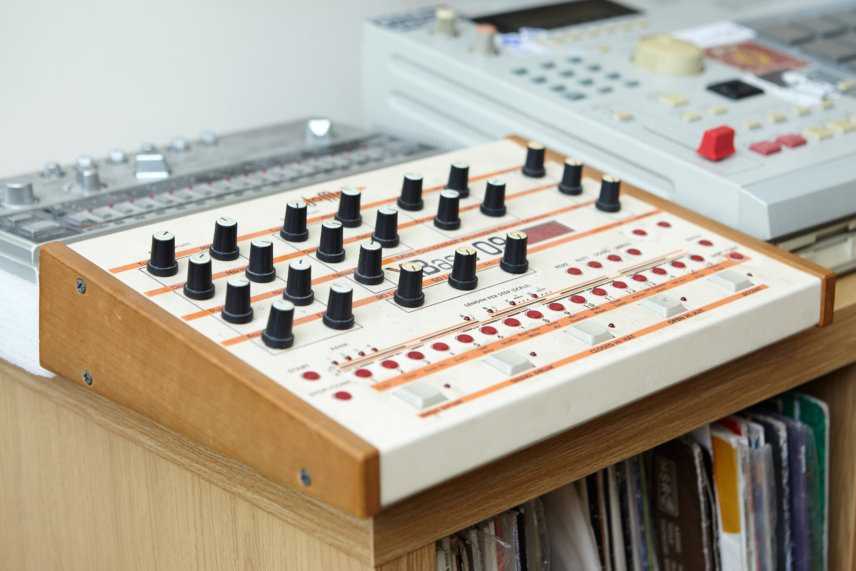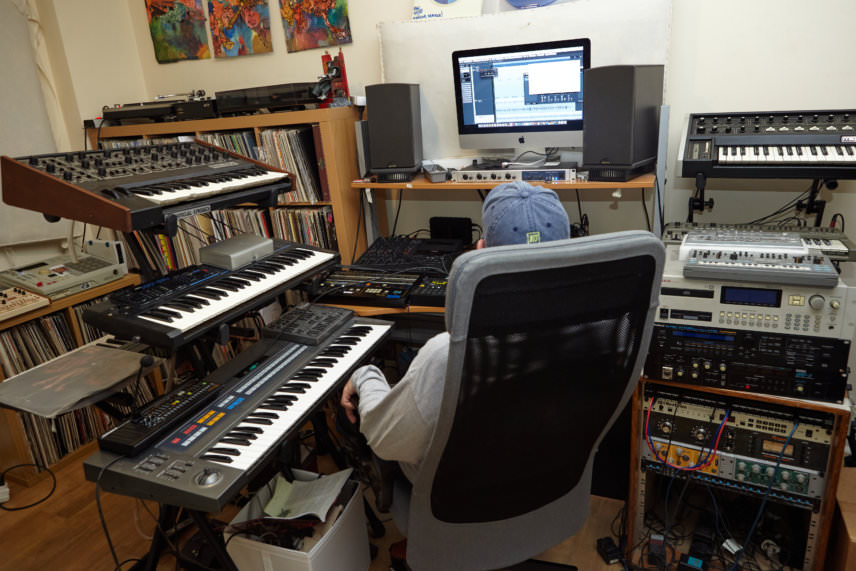Genre-straddling UK producer Mr Beatnick released his second album, ‘Honeycomb’ in June this year. It’s an enticing journey, taking in influences from UK funky, broken beat, hip hop, techno and more. We asked him to talk us through it, Track By Track.
‘Honeycomb’ is my second album, released on my own label, Mythstery; my first, ‘The Synthetes Trilogy’, came out on the Don’t Be Afraid label in 2013, and was more of a collection of singles than an album. With ‘Honeycomb’, I had a clearer idea of what I wanted to make: an album that touched on all my influences, from slower hip-hop beats and funk grooves, to faster house, techno and broken beat, all tied together with the same signature sounds and texture.
I considered this album as my attempt at a ‘modern-day library album’; I collect production music or ‘library’ albums from the 60s to the 80s, and what I like about those records is you get all sorts of surprises on the same album, from cheesy orchestral tracks to boogie funk, to wild synth experiments. I love the oddball quality of those records, the fact that the musicians were often writing as though no one was really listening to them, instead, just focussing on a mood.
Library albums tend to be a grouped around a central theme or concept; ‘Future’, or ‘Action’, or even in one case I own, ‘Kitchenware’. Honeycomb aims at the rich, pastoral, synthesised landscapes found more on ‘Nature’ themed albums; rather like Mort Garson’s ‘Plantasia‘, the goal was to create patterns and structures that sound live and organic, but all crafted with synthesisers. Because the album was assembled gradually from sketches made on different machines over a period of years, the early demo versions sounded really mismatched and a bit of a mess. I ended up mixing the album down from stems on an Amek BCII at The Whole Truth’s studio, adding live dub effects off hardware like the Roland Space Echo, which helped smooth out the rough edges and bring all the songs together.
Honeycomb
The title track opens with kalimba and shakers recorded through my trusty ol’ SM57. The song was built up from the drums – the first drum part you hear is taken from an old recording I found of me playing drums really badly, subsequently chopped, sequenced and layered with breakbeats in the MPC2000. Bassline was written on the Sequential Circuits Pro One, chords from the Oberheim Matrix 1000. The Rhodes-sounding part was played live on a Hohner Pianet loaned to me by NTS’s Adam Oko – I swop gear around with friends frequently, which helps to keep the writing process fresh and keep the sound sources interesting. The live instrumentation and layering ended up giving it the exact organic live feel I wanted to open the album with, like an introduction to the central theme. Dedicated, with thanks, to all the bees – so long, and thanks for all the honey.
Noah’s Mood
Based on an older sketch, this attempt at an authentic-sounding boogie funk jam started life almost entirely on the MPC 2000. The bassline was made by stacking Roland SH101, MC202 and TB303 – I’ve always tended to stack the 101 and 202 voices on tracks like ‘Sun Goddess’, as the two of them chained together via CV / Gate creates a really powerful 2 oscillator mono-synth. Additional drums were layered off a Kelpe-loaned Roland TR707, TR-8 and some live percussion playing. The vocoded voice parts are off the little-known but truly mental-sounding Korg DVP-1, which is a bit like a vocoder version of the Korg Poly 800 MKII. The delayed synth lines are off the Moog Micromoog, which is literally impossible to keep in tune but which always cuts through the mix, and adds some 70’s retro to proceedings.
Sometimes it’s better to not correct all the mistakes, maybe even turn them up a bit
Broken Fury
This one started life as a tribute to all things UK Funky and broken beat, and then dived off the deep end as my ideas often seem to. The xylophone part here that drives the groove came off the old jungle studio workhorse favourite, the Roland Super JV-1080. Bassline here is actually a 303, filtered down to just the sub. My favourite part in this one is probably the chords in the b section which come off the Oberheim Matrix 1000 – a pad I call the ‘Balil’ patch, since it was used most infamously on his song ‘Nort Route’, along with a bunch of other great techno and jungle songs from the 90s. The Matrix 1000 is a real powerhouse if you can get away from the presets and more into programming it – I use CTRLR to do that, which really opens it up to creative possibilities.
Hollow Peter
The part that took the most work in this one is the chord sequence later in the track that brings it together – made by stacking the Poly 800 MKII and Roland JX8P, overdubbed with a layer of Hohner Pianet played live. I often start writing chord parts by sketching in piano roll. It’s often tricky to then transcribe something you’ve written in piano roll into something that makes sense to play with your hands on the keys – it’s the tension between the two that gives you interesting layers I find, changes that are caught between robotic and human-sounding. Drums on this one were MPC2000 and Jomox Airbase 99, and the filtered looping textures came from a sample that I processed repeatedly through filtering plugins.
Sixth Sense
I think the opening 30 seconds or so of this track is my favourite moment on the album, simply because it sounds so true to those library inspirations I was talking about, in particular those on the musique concrete and experimental synth side. The sound was made on the Yamaha CS-40m voltage controlled by an MFB Urzwerg CV/ Gate sequencer, which is a wild and unruly box to control but which always seem to fluke out in the field of accidental sound design. The Urzwerg has 4 rows of step sequencing, each sending voltage to different parameters on the CS-40M, some are modulating the filter, some are creating the rhythm sequence. The synth was another Adam Oko loan, and had been previously owned by Plaid – a lot of their sounds were still stored in the memory, and I modified one of them to create the patch on the song. There’s a really dark-wave quality to that synth which is quite unique, quite gothic and moody – reminds me of bands like Ultravox.
Invisible Escalator
This was pretty much entirely made on the EMU SP1200, this time loaned off Quarion, which is why it sounds so thick and so lo-fi. The machine only has 10 seconds of memory, but that’s plenty when you’re making a simple stripped-down house groove like this, with short samples of a dub chord, hihat, kick and bass, all assigned to different channels. I layered towards the end with a few Oberheim Matrix 1000 chords and Micromoog bass, but the track felt like it didn’t need much. At The Whole Truth’s studio during mixdown, we patched the chord parts through his Mutronics Mutator filter and I live-dubbed the cutoff to give it some movement. The mutator is now heavily sought-after since Daft Punk made it legendary with their early work, much of which was also composed on the EMU SP1200 – the two pieces of gear complement each other perfectly.
Royal Jelly
The chords on this sound like a sample but were actually Oberheim matrix 1000 bounced onto cassette tape and re-sampled into the MPC 2000 – I’ve been really getting into cassette bouncing lately, you can add so much texture to a flat sounding part. The bassline is off the SH101, 80’s cowbell sound off the JX8P, chord stabs off the Poly 800 MKII. I added live finger snaps, melodica and a bit of percussion to give it more live room sound, and finally another shout out to our flower-pollinating friends at the end, in keeping with the theme.
Orion
This one took ages – there were so many discarded mixdowns that didn’t quite work for one reason or another, mostly basslines that sounded muddy or 100 different snares that sounded shit – I wanted it to sound very polished and hi-tech, almost to Photek levels. The chords were made with some sort of odd midi triggering combination in Cubase, one of those accidents that took seconds and you can never repeat. I ended up switching out the kick drum as the original take had a TR-8 808 kick that sounded flabby and buried in the mix. The final take uses the Electron Digitakt instead, which is great for designing the exact sound you are missing in a mix and getting it to sit properly – like an audio Swiss Army knife. My favourite part on this track is probably the effect on the Micromoog melody line, which uses a patch off the Eventide Space pedal to give the lead a detuned harmony line.
To Meet Her
I found this beat when I was tidying up the old Windows XP machine I used to write my earlier songs on – it came from a session recorded around the time Ahu and I were writing ‘I Know All The Bitches’. It had that sort of vintage hip hop swing that reminded me of playing beats down at CD-R, Plastic People, when everyone was trying to make the perfect hip hop groove that would get all the heads in the room nodding – it’s a shout-out to those good old days I guess. I took all the drum sounds out of the project and loaded them into the Digitakt, did some sound design with Soundtoys Crystaliser to give the background textures some more character and interest, and then rebuilt the drum track from scratch, layering it with a Roland TR606. There’s a clue hidden in the title as to which synthesiser pioneer inspired the track, if you can decode it.
Luxette
This was always intended to be the album closer, and was probably one of the first ones I actually wrote, chronologically – I learned that sometimes it’s easiest to start at the end of the record and work backwards. There’s a whole lot of cassette tape on the layers here, via the MPC2000 as well – bouncing a layer to tape, then back to the computer, chop it in the computer, back into the MPC, repeat. The cascading arpeggios were all made with different polysynths, the drums were made quickly by chopping a break up in Cubase and moving the slices around – it sounded quite jagged and raw, but I liked how it contrasted with the smoothness of the backing track. Sometimes it’s better to not correct all the mistakes, maybe even turn them up a bit.
Mr Beatnik’s Honeycomb is available on the Mythstery Bandcamp.



